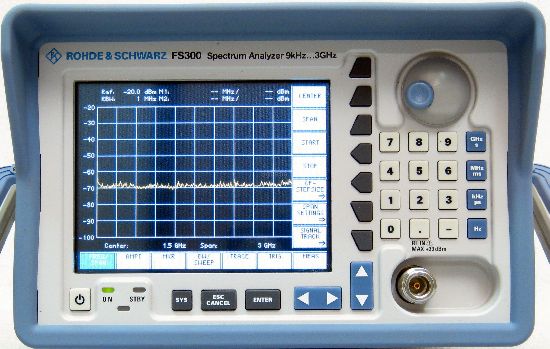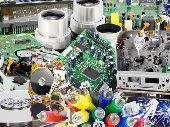The Rohde & Schwarz FS300 spectrum analyzer is a wide band, very sensitive receiver. It works on the principle of "super-heterodyne receiver" to convert higher frequencies (normally ranging up to several 10s of GHz) to measurable quantities. The received frequency spectrum is slowly swept through a range of pre-selected frequencies, converting the selected frequency to a measurable DC level (usually logarithmic scale), and displaying the same on the CRT of the Rohde & Schwarz FS300. The CRT displays received signal strength (y-axis) against frequency ( x-axis).
Some applications for Rohde & Schwarz FS300 Spectrum Analyzers include Site Monitoring: Verify that the frequency and signal strength of your transmitter is accurate. Interference: Before a system is installed you use a Rohde & Schwarz FS300 spectrum analyzer to verify that the frequencies (you plan to use) are not occupied or if the presence of a very strong signal will interfere with your new setup. Interference can be created by a number of different situations. Other tests that utilize the Rohde & Schwarz FS300 spectrum analyzer features include antenna isolation, co-channel interference, adjacent channel power, occupied bandwidth, intermodulation, microwave or satellite antenna alignment, and characterization of components.
Features
- Resolution bandwidth 200 Hz to 1 MHz
- Frequency counter with 1 Hz resolution
- Maximum input level +33 dBm
- Ergonomic user interface
- Remote control via USB interface
- Electronic attenuator with 2 dB steps
- Measurement functions: signal tracking, TOI measurement, marker and delta markers, noise markers, signal bandwidth
- Stores up to 10 set-ups and 5 traces
- Range: 9 kHz to 3 GHz








